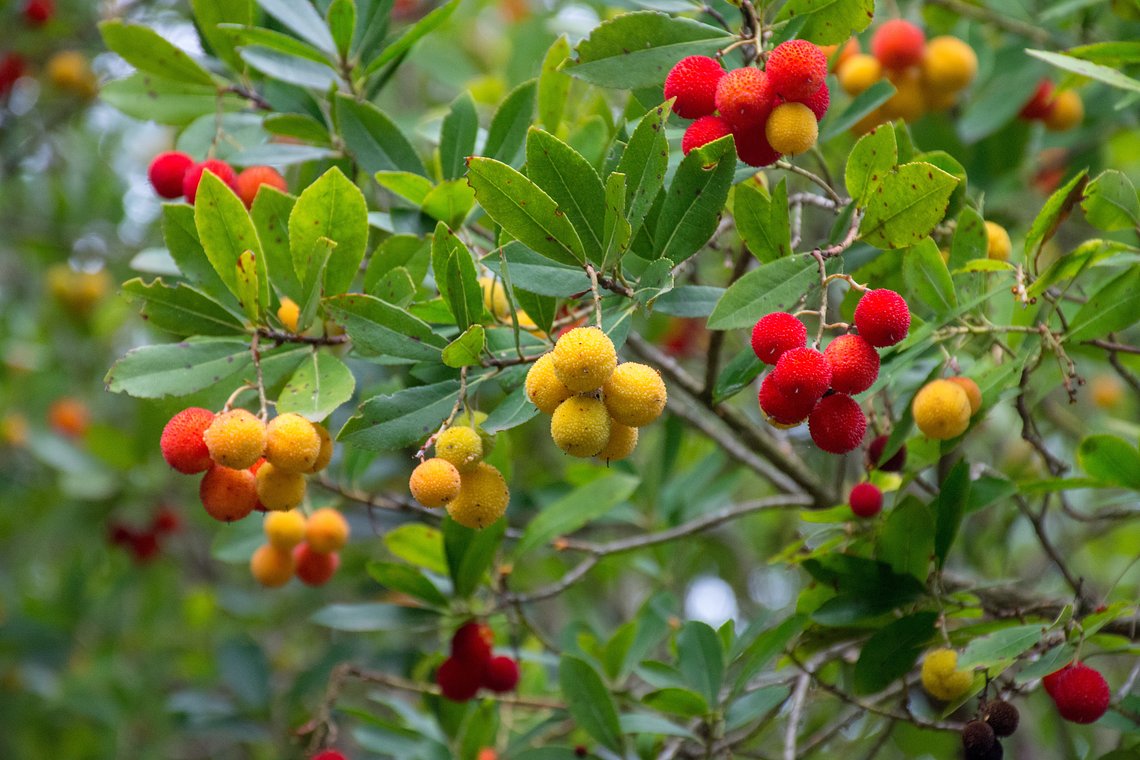Discovering Medronho, the firewater of Monchique
The Art and Science of Distilling the most iconic fruit brandy from the Algarve

Posted on Mon 20 Dec 2021 · by Gloria Dall'Orto
Monchique Landscape
If you can't wait to discover the scents and flavors of Monchique, join us for an informative and mouth-watering experience every Friday in Monchique from October to April, with our tour: Monchique Hills & Flavors. A full day experience to discover Medronho and Black Pork sausages.
Medronho is one of the symbol of Monchique traditions and its picking on the hills has passed from generation to generation.
Reaction to a first sip of Medronho....40 seconds.
The council of Marmelete and 1000olhos communication agency, have shot this beautiful documentary about the people picking and processing this fruit in the Serra de Monchique, the so called "garden of the Algarve" due its lush vegetation.
Every year, around October and November, they pull up their sleeves to prepare themselves for the distillation process and to share with them the aromas, ambiences and the secrets of this deeply-rooted and ancient activity of the region.
Medronho Distillation
The making of the so called Água-Ardente (Burning Water or Fire Water in a very rough transalation to English)
The "estila", the way it’s called locally, is the process of distilling medronho brandy that has been carried out in Monchique for centuries, between January and March, and is a convivial and festive occasion for neighbours, family and friends. While the fermented medronho is slowly distilled in copper alambiques, time is spent socialising, chatting, playing cards and tasting the brandy with chouriço sausage, smoked ham, bread, “filhoses”, (traditionally sweet pastries, which are usually fried in olive oil with sugar and cinnamon often sprinkled on top) or even pork roasted over an open fire in the boiler.
The 'estila' process begins by making the fire that will heat the boiler of the alambique, then the fruit that has been fermenting for about two months in wooden containers is added. This mass of fruit is placed in the boiler and mixed with water and some "loose" brandy left over from the last stage of the previous year "estila", the alembic head is then fitted and sealed with the mash so that it is tightly sealed. When the liquid boils, steam passes through the copper tube, which in Monchique has the peculiarity of being rectilinear, immersed in cold water, cooling the translucent liquid that begins to spill into an earthenware pitcher.
At the distillery, which is usually poorly illuminated and where the smell of medronho and the fire can be strongly felt, people warm their bodies with the aguardente, tongues are loosened, quarrels are played, and it is said that many popular songs have been passed down or invented, like the one that is said in the oral tradition of Monchique (unfortunately I cannot translate into English by rhyming): "Inside, it's for fun / Outside, it's for healing / In winter, it's for heating / In summer, it's for cooling".
